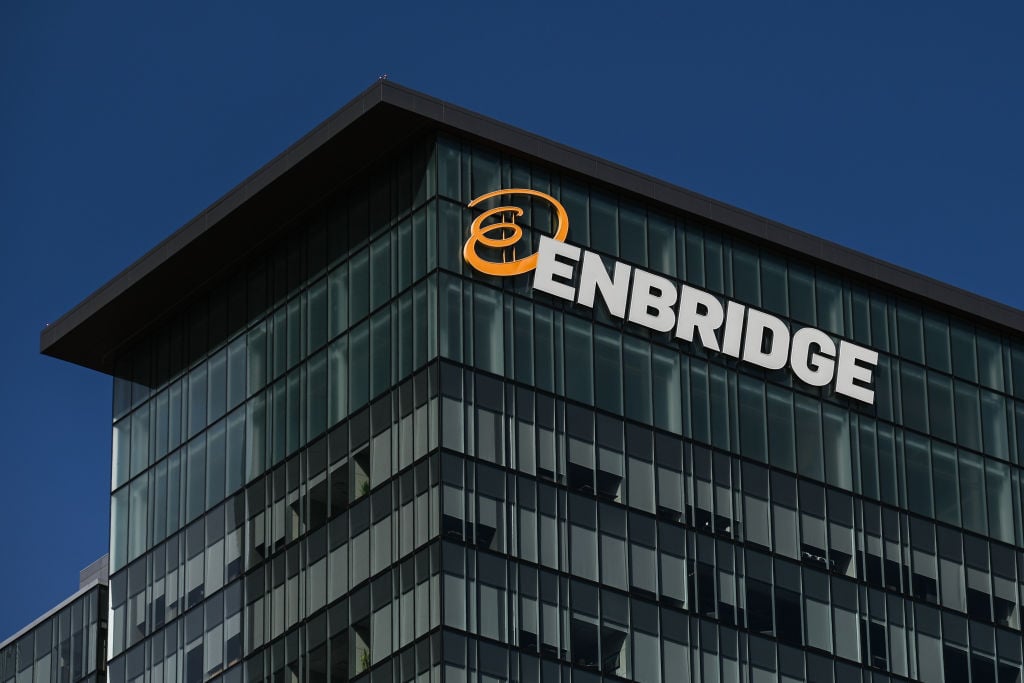Midstream energy specialists Enbridge (ENB +0.58%) and Magellan Midstream Partners (MMP +0.00%) are currently offering nearly identical dividend yields: 6.1% for Enbridge and 6% for Magellan. However, that's pretty much where the similarities end. In size, structure, scope, even nationality...you name it, these energy giants are very different.
It can be pretty tricky to evaluate which company is likely to outperform the other when there are so many things about them that are dissimilar, but let's give it a shot anyway and see which one looks like the better buy.

Top oil and gas industry players Enbridge and Magellan operate huge networks of pipelines. Image source: Getty Images.
Apples and oranges
Magellan Midstream Partners is a fairly standard American pipeline operator. While it's structured as a master limited partnership (MLP), it's very similar to a lot of other midstream MLPs. It has a $15.1 billion market cap and specializes in shipping and storing refined products through its network, although it does have some ammonia and crude oil assets as well.
Sound boring? It kind of is: Magellan is one of the most conservatively run midstream partnerships in the country, but management has generally done an excellent job of slowly but surely growing the company and its distribution.
Meanwhile, the Canadian Enbridge, with a market cap of about $71.5 billion -- more than four times Magellan's -- is one of the largest energy companies in North America. While it primarily transports natural gas and crude oil, it also has wind and solar assets, plus dips into the downstream sector by being a major natural gas utility serving customers in Canada and upstate New York.
Now, none of this makes one of these companies better than the other. Certainly, both large and small companies can outperform, as can more-diversified and less-diversified companies. There are a two other differences, though, that may tip the balance for investors.
Debt and the midstream
For most midstream companies, a high debt level is the norm. That's because massive midstream projects like pipelines, storage facilities, and export terminals require big up-front investments, plus have to be fully completed before they can begin generating any revenue. A pipeline that only goes 95% of the way from Point A to Point B ships as much oil and gas to Point B as no pipeline at all: zero.
Midstream companies take on debt to finance these huge construction costs, and then gradually pay them off over time. According to a June report by independent energy research company Alerian, the average debt load for a midstream company was 3.7 times EBITDA at the end of 2018. Currently, Magellan's debt-to-EBITDA ratio of 2.4 is much lower than the industry average (and dropping). Meanwhile, Enbridge's debt sits at about 5.1 times EBITDA, on the high end for the industry.
It's worth noting, though, that both companies have been successfully lowering their debt ratios: Enbridge's is at its lowest level since 2013, while Magellan's has also dropped over the past three years. However, those changes are more due to increases in EBITDA than debt reduction: Since 2016, Magellan's long-term debt has grown by about 2%, while its EBITDA has skyrocketed 64%. Similarly, Enbridge's debt jumped 70.7% in 2017 as it began acquiring the MLPs in which it had controlling stakes, and hasn't decreased significantly since then, but its EBITDA is up 121% over the last three years.
Both companies' debt is rated investment grade, so this alone shouldn't concern Enbridge investors. That said, a lower debt ratio can give a company more flexibility to pursue additional growth.
Speaking of growth
On its most recent earnings call, Enbridge reaffirmed that it expects dividend growth of 10% through 2020. Of course, that's not very far into the future, but management indicated that it has a plan to keep growing the business beyond that time frame, by investing $5 billion to $6 billion per year on growth projects. The company announced it had secured some $19 billion in capital to fund these ambitious plans.
But what about paying down debt? Enbridge has been a bit more evasive when it comes to that topic. It's targeting a range of "consolidated debt" that's 4.5 times to 5.0 times EBITDA, and is currently reporting about 4.6 times. If the company's massive Line 3 project -- a pipeline from Canada to Wisconsin that's currently held up in Minnesota -- moves forward at some point, CFO Colin Gruending says it might be able to get its debt even lower. However, the new route for Line 3 was proposed back in 2014, and was originally scheduled to enter service in late 2019, so it's anyone's guess what a revised timetable might look like.
Meanwhile, the low-debt Magellan is also, unfortunately, projecting lower growth for the foreseeable future. It's looking at distribution growth in the mid-single digits as it tries to raise its distribution coverage (the amount of cash it has available to fund its distribution payments to unitholders). Currently, the company's goal is a 5% distribution increase for 2019. No word on how this might change moving forward. But Magellan is easily within its target -- and conservative -- debt level and payout ratio range.
Risk vs. reward
Neither of these energy companies is a bad buy right now...but which is the better one? On the one hand, conservative, risk-averse investors are likely to be attracted by Magellan's "slow and steady" approach and its superior balance sheet. On the other hand, Enbridge's high debt levels don't seem to be causing analysts or management much concern, and the company has much stronger growth plans than its smaller rival.
As much as I'm a fan of Magellan, I think Enbridge is going to be the better buy for most investors. For me, the combination of a diverse asset mix and superior growth potential outweighs concerns about its debt load. However, if you're a more conservative investor, Magellan is probably the better buy for you.






